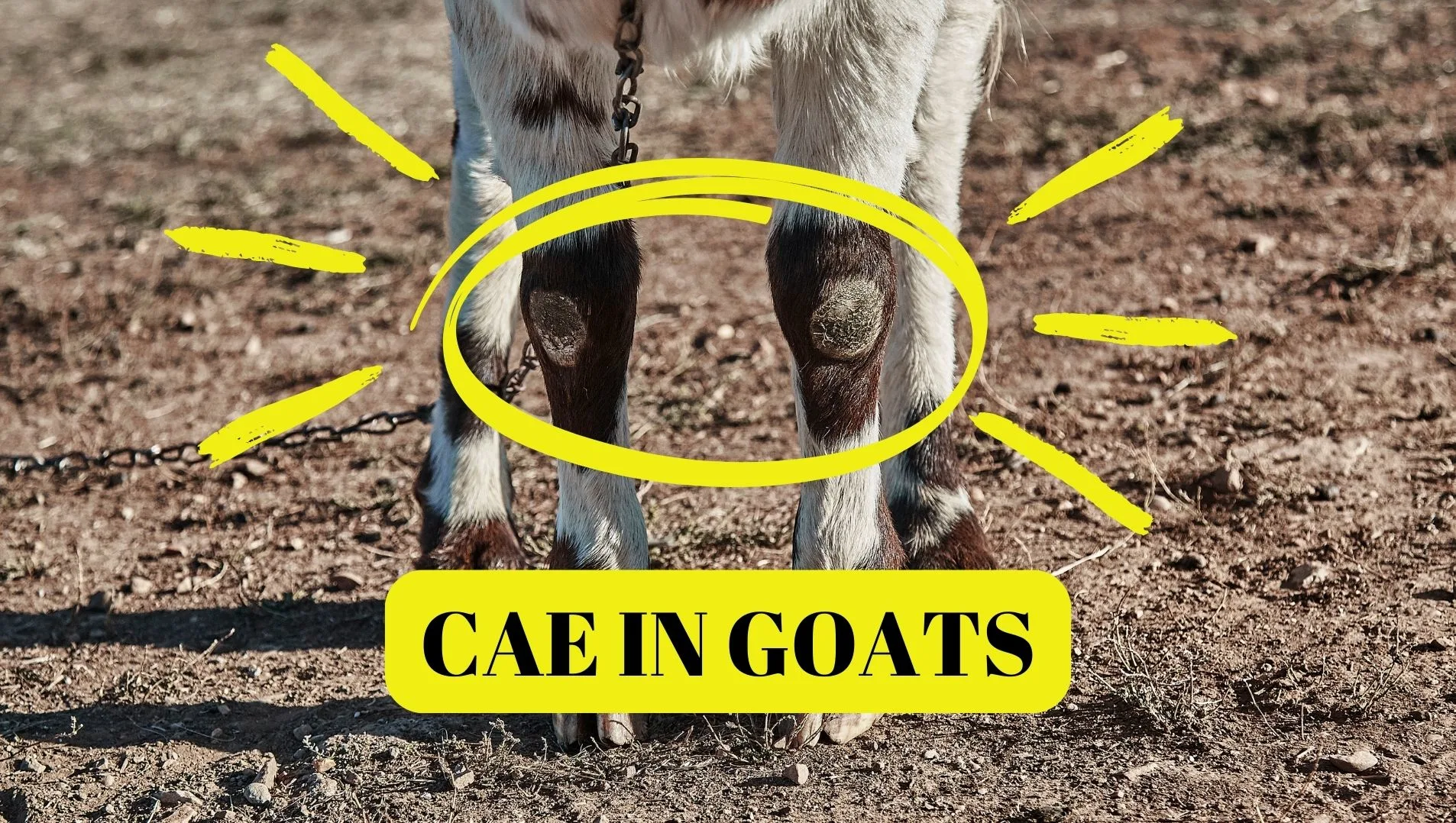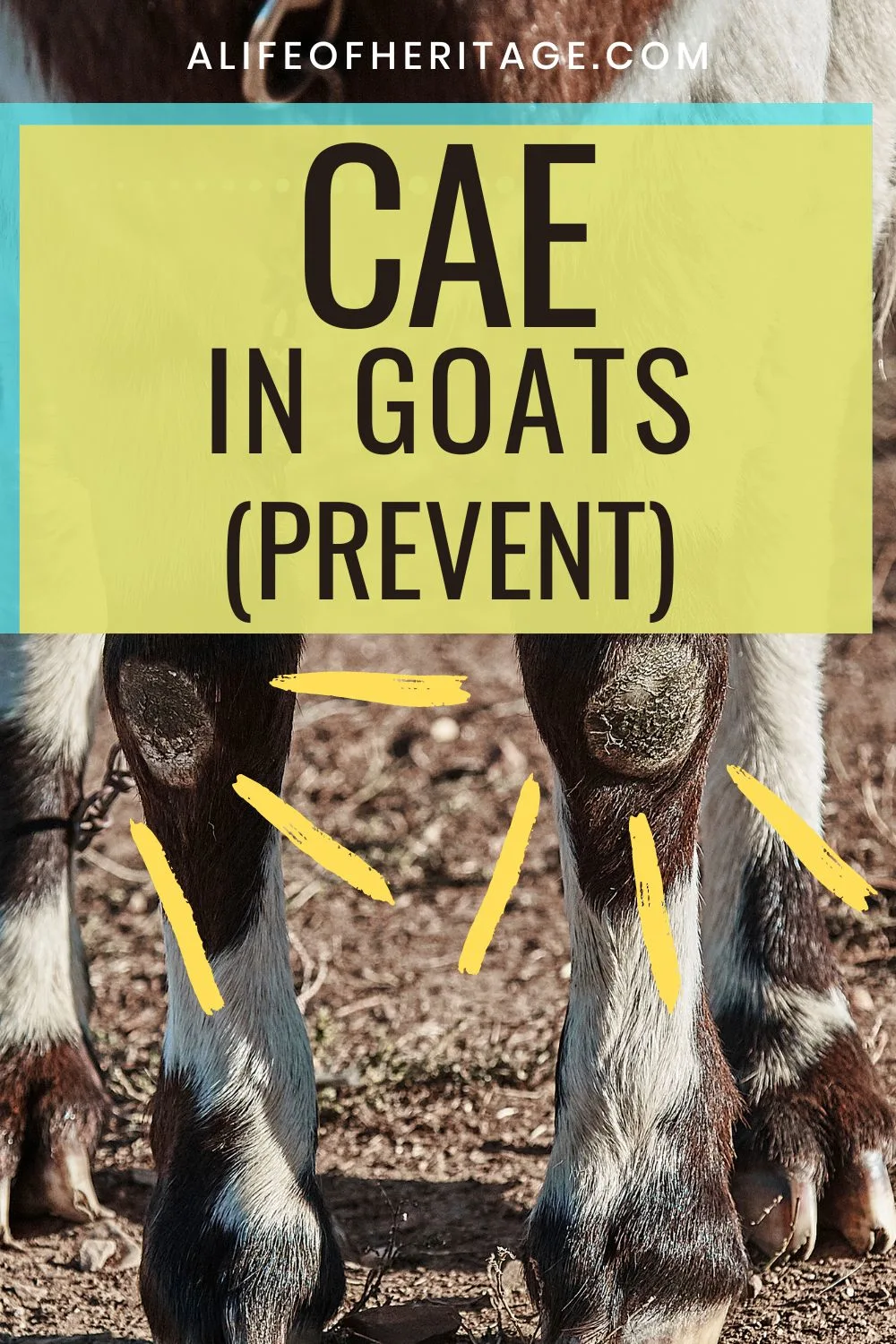Introduction to CAE in Goats
Caprine Arthritis Encephalitis (CAE) is a viral disease that primarily affects goats. It is caused by a lentivirus, similar to the one that causes HIV in humans.
In this article, we will explore what CAE is, how to prevent its spread, and what steps to take if your goat is diagnosed with the disease.
What is CAE in Goats?
CAE is a progressive viral disease that primarily affects the joints and the nervous system of goats. It is characterized by inflammation, leading to arthritis, and lameness. The virus is transmitted through various routes, including ingestion of infected milk, colostrum, or respiratory secretions from infected animals. It can also be transmitted vertically from an infected mother to her offspring.
This virus is connected to the production of white blood cells, so any secretion with these cells made by the animal can potentially infect another goat who comes in contact with the fluid. The antibodies created by the CAE positive goat can’t and don’t attack the virus. When a goat tests positive, that means they are infected with the disease but not immune to it.
CAE can lead to serious health issues, such as arthritis in adult goats and encephalitis in kids.
CAE is not contagious to humans. And at this point, it is incurable.
And interestingly, goats can carry CAE their entire lives and not show any signs and test negative. But when they become stressed, it will activate it and then they will test positive and start showing symptoms. Also, a doe who is positive can have kids who test negative. And even in a set of twins, one can test positive and one negative. That definitely complicates the testing and outcome of this disease.
Watch the CAE Video
What are the Signs and Symptoms of CAE in goats?
When a goat with CAE begins to present symptoms these are some of the signs you may see in your goats:
- Over-sized, swollen knobby knees.
- Hair on knees, signifying that the goat is not laying down because it is too painful.
- Hard udders, without milk.
- Fatal pneumonia.
- Does may produce up to 25% less milk
- Infected kids will die quickly from encephalitic seizures.
Why Do You Want a CAE Free Herd?
- Healthy goats are easier to manage and care for.
- Healthy goats are easier to sell. A positive animal will have a low likelihood of selling. This will affect profits.
- An in infected goat will produce less milk, which will produce smaller kids, which will affect profit, especially in meat-goat herds.
- If you’re selling breeding stock, you must own disease free sires and dams.
- Shipping out of state or out of country will require this test, and results will affect shipping.
Prevention of CAE
Preventing the introduction and spread of CAE within a goat herd is crucial for maintaining a healthy flock. Here are some key preventive measures:
- Testing: Test all breeding goats before introducing them to the herd.
- Use reliable diagnostic tests, such as ELISA, which has an accuracy and sensitivity of up to 95.2%, to identify infected individuals. You will need a 8-10 cc’s blood sample for this test. You can get a CAE test for about $5 or you can also test with the same blood sample for CL and Johne’s Disease for about $18.
- These test evaluate antibodies. But goats infected with this will not always have antibodies, so a “false-negative” is possible. But this goat can shed the virus even with a negative test. But if the goat tests positive, it does have CAE and it will shed the virus.
- Test kids who are older than 8 months old.
- Isolation: Isolate newly acquired goats for a period of time (usually 2 weeks) before introducing them to the rest of the herd. This helps prevent the potential spread of the virus.
- Keep a closed herd as much as possible, but new breeding stock will happen at some point, so it’s not entirely possible to have a completely closed herd.
- Hygiene and Sanitation: Practice good hygiene by regularly cleaning and disinfecting barns, feeding equipment, and water troughs. This reduces the chances of transmission through contaminated surfaces.
Managing CAE-Positive Goats
If a goat in your herd tests positive for CAE, there are steps you can take to manage the situation and minimize the impact on the rest of the flock:
- Separate Affected Goats: Isolate CAE-positive goats from the rest of the herd to prevent further transmission. This includes separating kids from adult goats to reduce the risk of infection.
- Supportive Care: Provide supportive care to affected goats, such as maintaining a comfortable environment, offering a balanced diet, and ensuring access to clean water. This helps support their overall health and well-being.
- Regular Monitoring: Monitor CAE-positive goats for any changes in their condition, such as worsening arthritis. Promptly consult with a veterinarian if you notice any concerning signs.
- Some dairy breeders will take their kids from the dam right after birth and bottle-raise the kids. They would be raised on milk replacer or pasteurized milk.
- Culling affected goats will most likely be the end result.
Consulting a Veterinarian
If you suspect that your goat is infected with CAE or if you have a confirmed diagnosis, it is essential to seek professional guidance from a veterinarian. They will be able to provide specific advice tailored to your situation and recommend appropriate treatment options, if available. Keep an open line of communication with your veterinarian to address any concerns or questions you may have regarding CAE.
Conclusion
Caprine Arthritis Encephalitis is a significant concern for goat farmers, but with proper preventive measures and management strategies, its impact can be minimized. By implementing testing protocols, practicing good hygiene, and following appropriate management techniques, you can help safeguard the health of your goat herd. If CAE is detected, taking necessary steps to isolate, monitor, and provide supportive care to affected goats will aid in maintaining their quality of life. Always consult with a veterinarian for professional guidance and assistance in managing CAE in your goats.

